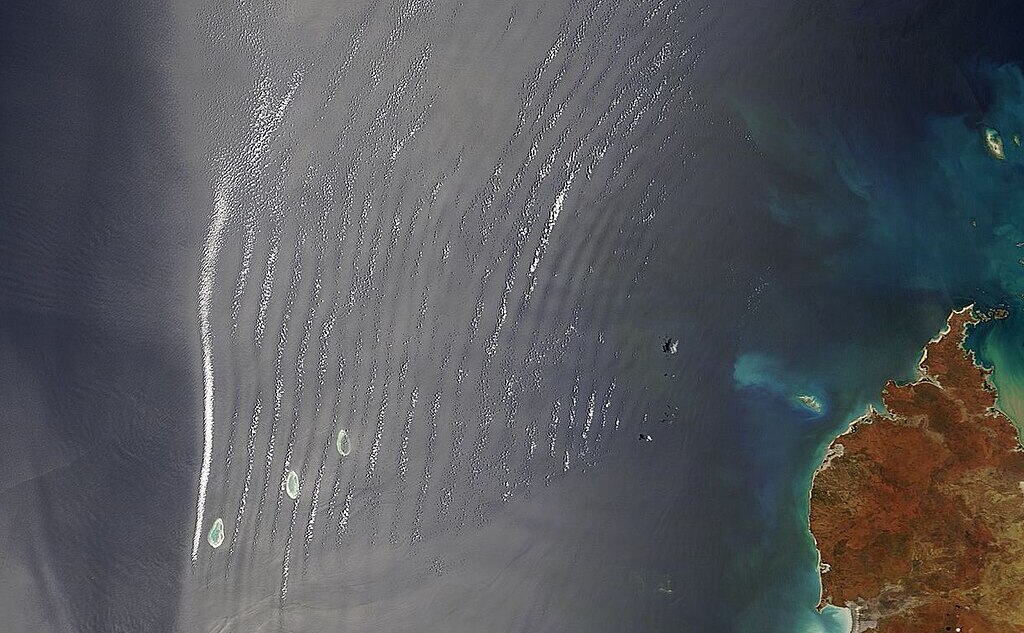BORIS ANDREWS

Postdoctoral Research Associate, University of Oxford (he / him)
HIGH-ORDER CONSERVATIVE AND ACCURATELY DISSIPATIVE NUMERICAL INTEGRATORS VIA AUXILIARY VARIABLES
Boris Andrews | Patrick Farrell
16.JUL.2024 (arXiv)
CLICK HERE TO CHECK OUT PART 1!
[…] we propose an approach for the construction of timestepping schemes that preserve dissipation laws and conserve multiple general invariants, via finite elements in time and the systematic introduction of auxiliary variables. […] We [devise] novel arbitrary-order schemes that conserve to machine precision all known invariants of Hamiltonian ODEs […] and arbitrary-order schemes for the compressible Navier–Stokes equations that conserve mass, momentum, and energy, and provably possess non-decreasing entropy.
In this work, we propose a framework for the construction of timestepping schemes that preserve dissipation laws and conserve multiple general invariants. The framework employs finite elements in time and systematically introduces auxiliary variables; it extends to arbitrary order in time. We demonstrate the ideas by devising novel integrators that conserve (to machine precision) all known invariants of general conservative ODEs, energy-conserving finite-element discretisations of general Hamiltonian PDEs, and finite-element schemes for the compressible Navier-Stokes equations that conserve mass, momentum, and energy, and provably possess non-decreasing entropy. The approach generalises and unifies several existing ideas in the literature, including Gauss methods, the framework of Cohen & Hairer, and the energy- and helicity-conserving scheme of Rebholz.
While the results of this work are more general, I would like to provide some exposition for it through the lens of:
- Hamiltonian systems
- symplectic integrators
- the Benjamin–Bona–Mahony (BBM) equation
I find these results be informative, curious, motivating, and (not least) cool!
Symplectic integrators are frequently lauded for their “energy-conserving properties”.
Their status as the gold standard for simulating Hamiltonian systems is often put down to this.
Yet, this belief is not entirely accurate.
Symplecticity enhances the collective behaviour of a group of simulations, which is beneficial! However, it does not guarantee energy conservation.
In fact, as noted by Ge and Marsden (1988):
Symplectic integrators cannot* conserve energy.
(*in general)

This limitation is evident in the Benjamin–Bona–Mahony (BBM) equation, a model for phenomena including long water waves.
Solutions to the BBM equation conserve energy, \(\int(\frac{1}{2}u^2 + \frac{1}{6}u^3)\), contributing to their stability and persistence over time.

Simulating the BBM equations using the 2-stage Gauss method, a symplectic integrator, we observe a gradual decline in the simulated energy.
This decline manifests as artificial, unphysical oscillations in the solution.
Take the following semidiscrete variational formulation: find \(u \in C^1(\mathbb{R}_+; U)\) such that for all \(v \in U\), \[ \int_\Omega(\dot{u}v + \dot{u}_xv_x) = \int_\Omega\!\left(u + \frac{1}{2}u^2\right)v_x, \] at all times \(t \in \mathbb{R}_+\). Discretise this in time using the 2-stage Gauss method.
The above video is at time \(20000\) with a moving camera of speed \(\frac{1 + \sqrt{5}}{2}\).
In our preprint, Patrick Farrell and I propose a framework to modify numerical time discretisations to preserve conservation laws exactly. We achieve this through:
- Finite elements in time
- The systematic introduction of auxiliary variables
Applying our framework to Hamiltonian systems (incl. the BBM equation) we derive a general Hamiltonian integrator with exact energy conservation.
Simulating the BBM equations using the modified 2-stage Gauss method, we observe exact energy conservation in the simulation.
This avoids the artificial oscillations and provides far more qualitatively accurate results.
(Note: The video should appear stationary. It’s loading fine; this is the correct solution behaviour!)
Take the following fully discrete variational formulation over \(T_n\): find \((u, \tilde{w}) \in X_n \times \dot{X}_n\) such that for all \((v, \tilde{v}) \in \dot{X}_n \times \dot{X}_n\), \[ \int_\Omega(\dot{u}v + \dot{u}_xv_x) = \int_\Omega(\tilde{w}v_x + \tilde{w}_xv_{xx}), \\ \int_\Omega(\tilde{w}\tilde{v} + \tilde{w}_x\tilde{v}_x) = \int_\Omega\left(u + \frac{1}{2}u^2\right)\tilde{v}_x. \] The introduced auxiliary variable \(\tilde{w}\) as introduced by our framework approximates \((1 - \partial_x^2)^{-1}\!\left[u + \frac{1}{2}u^2\right]\!\). We can see this scheme conserves \(H\) over \(T_n\) by taking \((v, \tilde{v}) = (\tilde{w}, \dot{u})\).
Again, the above video is at time \(20000\) with a moving camera of speed \(\frac{1 + \sqrt{5}}{2}\).
Crucially however, our framework extends beyond Hamiltonian systems, and beyond conservation laws. For instance, we use it to develop numerical schemes for the compressible Navier–Stokes equations that:
- Conserve mass, momentum, and energy
- Increase total entropy
Further applications of the framework can be found in our preprint, and we are actively pursuing many more at the moment!
The framework is general and powerful. If you are investigating any type of transient system, we hope our work can provide a simple approach for generating more physically realistic simulations.
We would both gladly discuss it further!
VIDEOS
Check out Patrick’s Langtangen Seminar (22.APR.2025) at Simula below:
His earlier ACM Colloquium (13.NOV.2024) at the University of Edinburgh and Heriot-Watt University can be found here.
RELATED WORKS
This manuscript is currently being partitioned into multiple submissions. Part 1, covering the general framework alongside applications to the incompressible and compressible Navier–Stokes equations, can be found here.
For a neat application of these ideas to a problem in magnetic relaxation that really highlights their importance, check out my subsequent work with Mingdong He, Patrick Farrell & Kaibo Hu, on structure-preserving integrators for the magneto-frictional equations.
RELATED OPEN PROBLEMS
CO-AUTHORS
Patrick Farrell

- Affiliation
|University of Oxford - Joint publications
|Helicity-preserving finite element discretization for magnetic relaxation / Enforcing conservation laws and dissipation inequalities numerically via auxiliary variables / Conservative and dissipative discretisations of multi-conservative ODEs and GENERIC systems / An augmented Lagrangian preconditioner for natural convection at high Reynolds number* / Automated Galerkin time stepping in Irksome*
TALKS
2026
- ECCOMAS WCCM, Munich
2025
- Biennial Numerical Analysis Conference, University of Strathclyde
- Numerical Mathematics & Scientific Computing Seminar, Rice University
- SIAM CSE, Fort Worth, Texas
- Scientific Computing Seminar, Brown Unversity
2024
- External ("tiny desk") Seminar, Rice University
- Computing Division Technical Meeting, UKAEA
- Firedrake User Meeting, University of Oxford
- PDEsoft, University of Cambridge
- Finite Element Fair, University College London (UCL)
- Exploiting Algebraic and Geometric Structure in Time-integration Methods workshop, University of Pisa
- UKAEA PhD Student Engagement Day, UKAEA
- Junior Applied Mathematics Seminar, University of Warwick
2023
- ICIAM, Waseda University
- Numerical Analysis Group Internal Seminar, University of Oxford
- Junior Applied Mathematics Seminar, University of Oxford
- Met Office Presentation, University of Oxford